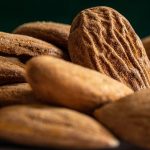
♦ cola de quirquincho is a popular aphrodisiac and memory enhancer in Argentina.
The aerial parts of Huperzia saururus (Lam.) Trevis. (syn. Lycopodium saururus Lam., syn. Urostachys saururus (Lam.) syn. Phlegmariurus saururus (Trevis.) are popularly known in Argentina as cola de quirquincho have been used as an aphrodisiac (Amorin, 1974; de la Sota, 1977; Ratera & Ratera, 1980) and for improving memory for centuries (Martinez Crovetto, 1981). For this reason, it was previously investigated and determined that the decoction of this plant elicits pro-ejaculatory activity and increases the ejaculatory potency in the Fictive Ejaculation Model.
It is consumed as an infusion and decoction. Depending on the concentration, the decoction can produce severe adverse effects such as vomiting, diarrhea, convulsions and even death (Amorin, 1974; Ratera & Ratera, 1980; Toursarkissian, 1980).
The studies on memory enhancement come from mouse models using a step-down test (Vallejo et al., 2007) which was correlated with previous results obtained in vitro in an electrophysiological model.
An aqueous extract causes inhibition of anticholinesterase activity (Ortega et al., 2004a). Chemical study of the bioactive extract was performed by GC-MS, revealing the presence of seven Lycopodium alkaloids, including some not identified previously: sauroxine, 6-hydroxylycopodine, N-acetyllycodine, lycopodine, lycodine, N-methyllycodine, and clavolonine. The whole group are now generally referred to as the lycodine type alkaloids.
One of the most interesting alkaloids is sauroine (Oretgea et al., 2004b). The alkaloid, N-Demethyl-sauroxine, was recently examined (Vallejo et al., 2013) and both it and the unmethylated variant sauroxine have been subjected to further scrutiny (Cifuente et al., 2014).
The plant comes from the moss family Lycopodiaceae. The alkaloids are related in their anticholinesterase activity to another Huperzia moss called H. serrata as it is in a number of mosses obtained from this particular family. The fascination with the plant is related to its ability to possibly alleviate the symptoms of Alzheimer’s Disease.
References
Amorin, J.L., (1974) Cola de Quirquincho. Urostachis saururus (Lam.) Herter (Lycopodiaceas) Una peligrosa planta usada en la medicina popular Argentina. Farmacobotanica. 16, pp. 3–6
de la Sota, E.R., (1977) Pteridophyta. In: Cabrera, A.L., (Ed.), Flora de la Provincia de Jujuy. INTA, Bs. As., pp. 19–27
Martinez Crovetto, R., (1981) Las Plantas utilizadas en medicina popular. Miscelanea 69, pp. 15.


Leave a Reply